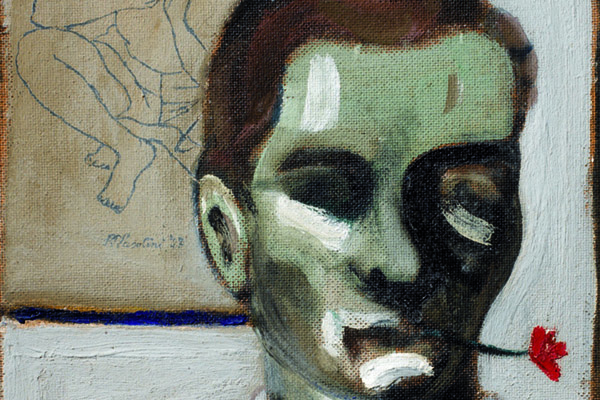There is much evidence of Pier Paolo Pasolini’s long association with drawing, which has been intertwined with his first poetic experiments since he was a child. In the years of his childhood and youth, Pasolini lived with his family in various provincial towns, following the transfers of his father, an army officer: “They made me a nomad”. A fixed point in his wanderings were the summers spent in his mother Susanna’s birthplace, Casarsa della Delizia, in Friuli.
In 1939, he completed his classical high school in Bologna and, at the age of seventeen, enrolled in the Faculty of Arts, where he deepened the passions he had developed at school: poetry, romance philology, the figurative arts, but also football and cycling. In the academic year 1941-1942, he received the famous “figurative fulguration” during the course on the Facts of Masolino and Masaccio held by Roberto Longhi. Between Bologna and Friuli he wrote the verses that were later collected in his first book: Poesie a Casarsa(1942), compositions in Friulian that were also noted by Gianfranco Contini. At the same time, he drew and painted, using Filippo De Pisis’ drawings of kids as a model. After the war, Pasolini settled definitively in Casarsa: studying his graphic and pictorial production means tiptoeing into the extraordinary workshop of these years.
The series of drawings from 1942 exhibited here is made on thin, fragile cellulose film, which the artist himself calls “cellophane”. The paint, squeezed directly from the tube, is processed with the fingers or the back of the brush directly on the transparent support, so that it is painting and drawing at the same time. The cellophane depicts familiar characters, such as his brother Guido, with his face peeking out in fear from the sheet on his hospital bed, where he had been hospitalised after defending his brother Pier Paolo in a fight.
PASOLINI PAINTER IN THE 1940S







